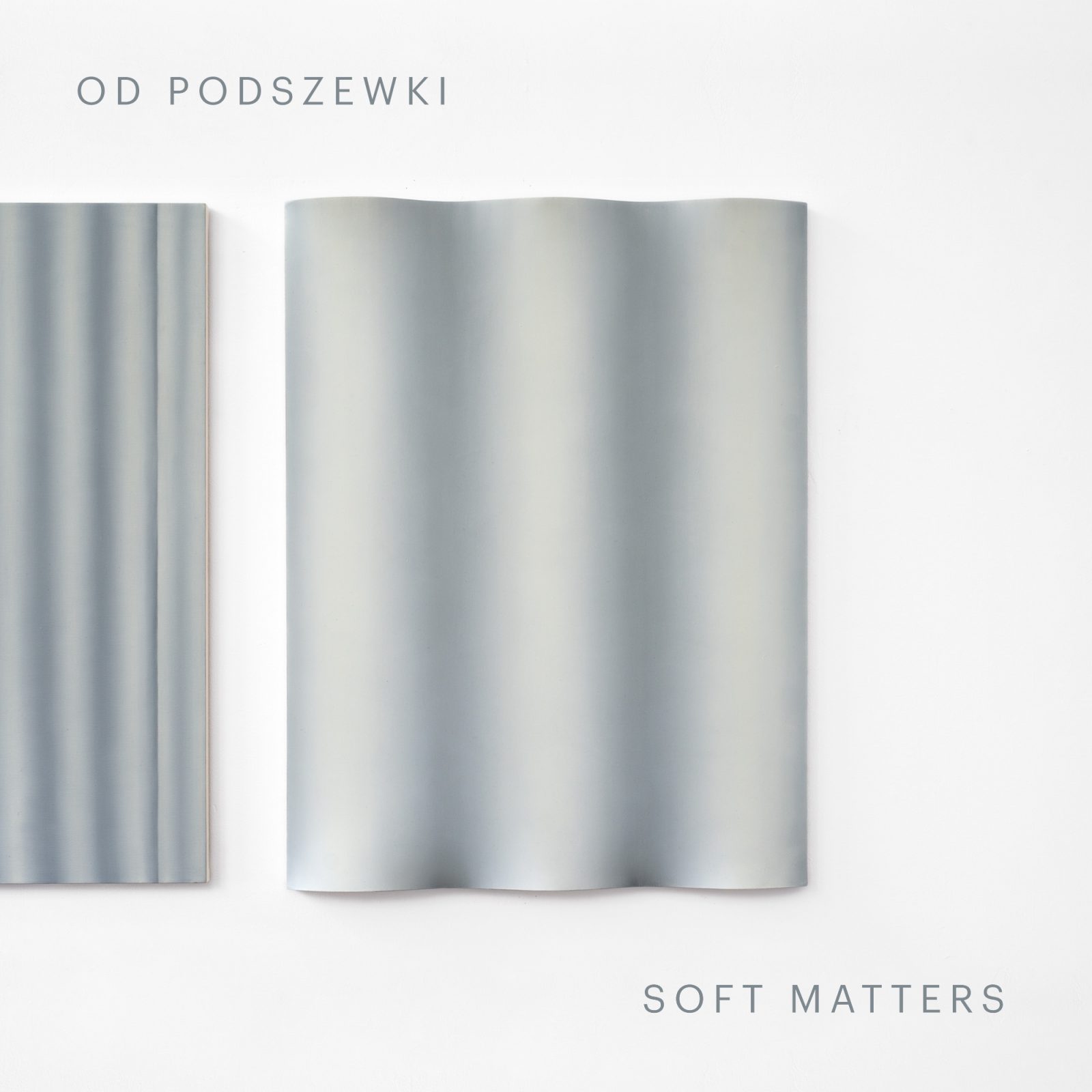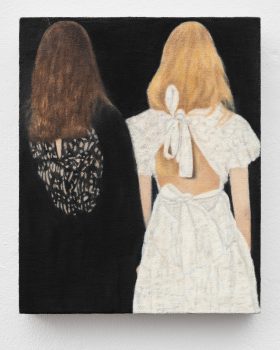
“Oil on canvas” is the common term for a popular painting technique, but the phrase might equally well apply to a greasy stain on a skirt or a pair of trousers. The show Od podszewki. Soft Matters looks at the underside of paintings and uncovers the forgotten, physical and utilitarian quality of canvas and its original function as fabric, material for making clothing. The reference to fabric alludes both to the body and to non-painting techniques of forming an image, through sewing, draping, stretching, cutting, appliqué. In the exhibition we show the latest works by women artists from Poland, Ukraine and the United States, most prepared especially for this occasion. Together they tell a soft-bound tale, body-hugging and cut from life.
An epic image by Karolina Jabłońska depicts portions of women’s clothing strewn about on the heavy March snow covering the Błonia fields in Kraków. The drama of this image conveys an ambivalent strain. The scattered clothing and personal items may constitute the traces of a macabre crime, but could also be a metaphor for escape, casting off the uniform of everyday duties, limitations, social and cultural demands.
Clothes are literally transformed into images in the works of Małgorzata Mirga-Tas. Her fascinating, large-scale patchworks are formally rich, while rooted in the Roma cultural universe and everyday, almost ritual, creative hustle and bustle. The protagonists are women, the artist’s immediate family and herself, and the material is often clothing, sheets or tablecloths of her own or collected from family and friends.
In the moulded works by Emilia Kina, canvas imposes the shape and content. With illusionist finesse, these images present curtains and screens, and essentially become them. Kina follows this seductive suggestion deeper, polemicizing with the voyeuristic nature of painting. Her pictures toy with the lure of vision and play off ideally on the border between the object and its representation, between the presentation and the curtain partitioning it off.
Skinformer by Aneta Grzeszykowska offers a radical elaboration of earlier soft sculptural objects created by the artist, a phenomenal view into the separate existential universe created by her. The work, in the form of a relief tailored from black leather, is a spiritual echo of children’s carnival games, clothed in a disturbing, fetishistic costume. It oversteps the safe boundary of the flat image and shocks with its carnal power.
Michelle Rawlings’ new images are a painterly processing of a specific field of visual culture, contemporary fashion photography and outfits alluding to historical clichés of girlishness. Rawlings employs classic painting techniques to give these images a new specific gravity and emotional weight.
Zina Isupova employs the technique of paper appliqué, popular in social modernist schools and preschools, used for decorations to mark special occasions and in arts and crafts exercises. From colourful paper and cardstock, Isupova cuts out lapidary compositions based on a keen observation of post-Soviet everyday life and its paraphernalia. The paper world she creates seems captivatingly real, familiar and close. At the same time, it is like a stage set—makeshift and cheap at the material level, as fleeting as shadow play.



